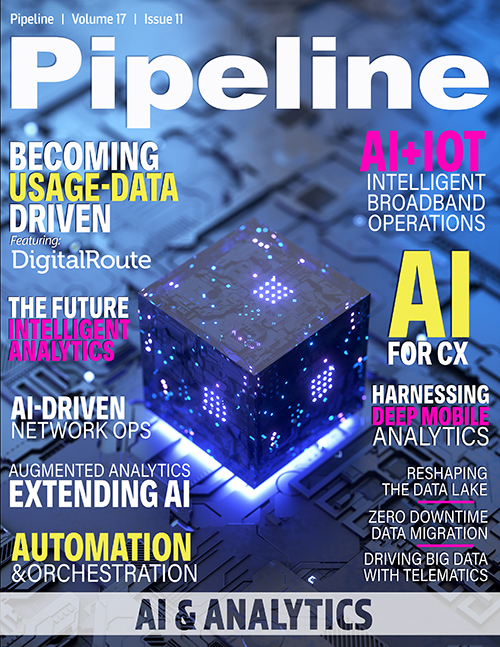Letter from the Editor

The truth can be hard to find. But data doesn’t lie.
Last month, I wrote about possibilities. One possibility was that the pandemic could get worse. I looked at the data and saw that, despite the common narrative, there was a concerning trend of increasing COVID infections and hospitalizations, even as vaccinations had reached over 80 percent in some regions. How could this be?
Largely, it was being blamed on the “unvaccinated population.” However, the data suggested there had been a large number – up to 74 percent – of reports of fully-vaccinated, breakthrough cases in communities and organizations. At the same time, lab tests of new COVID mutations – such as Gamma, Lambda, and Mu – showed antibody resistance, which the vaccines rely upon to provide protection. Yet, a very small percentage (less than 1 percent) of vaccinated people where being hospitalized. All in all, the data seemed to suggest that vaccinations were not as effective at preventing infection, but were effective at preventing severe disease. Which may be the best we can hope for. Much like the flu, COVID may be with us in various forms from here on.
The problem is many governments, schools, businesses, venues, and individuals didn’t follow the data. Instead, they followed the narrative. Schools reopened, without remote learning options, despite children under 12 years of age being ineligible for the vaccine. Many parents scrambled, to get their eligible children vaccinated with an experimental vaccine, that had only been available under Emergency Use Authorization for children 12 and up for a few months, and would take five weeks to provide full protection. As a result, pediatric case counts are at the highest since the start of the pandemic, and many pediatric ICUs are now out of space.
What’s worse is that vaccinated people felt protected. The narrative gave them a warm, fuzzy safety blanket. Many people believed not only that they could not get COVID, but they could not transmit COVID, creating a super-spreader army hundreds of millions strong.
But in light of these data, decisions must be made. I recently had the opportunity to interview an emergency room doctor in Florida, one of the hardest hit COVID regions within the United States. He told me “Masks are your first line of defense; the vaccine is your second.” Which makes perfect sense. I’d only add to that only n95 or higher rated masks, based on the data (from lab tests conducted at the University of Waterloo and University of Tokyo). With vaccine effectiveness coming into question – particularly in light of the new variants – the nice thing about n95 (or better) masks is that they don’t care about the shape or mutation of the virus particle, just its size. The size of the virus particle is blocked by the membrane, plain and simple.
It’s not perfect, but it’s the best we have right now. If you wear an n95 or better – such as n99 – mask you have a 90 percent or higher chance of avoiding infection. If you are vaccinated and become infected, your chances of becoming severely ill or hospitalized are 25 times less than that of someone who is unvaccinated. Masks are your first line of defense, vaccines your second. Which is the decision we made, based on the data.
Data doesn’t lie, but it does need to be interpreted. We’re amassing mountains of data every day, and it needs to be analyzed and actioned. It literally can and has saved lives. But making sense of the data, deriving key insights to make better, more informed decisions, has been a challenge. Which is why this issue of Pipeline is so important.
In this issue of Pipeline, we explore the use of data, AI and analytics. DigitalRoute looks at solving problems in usage-based revenue models by helping enterprises become usage-data driven. Ayla Networks describes how their cloud-native IoT platform and and AI and machine-learning solutions are transforming ISP performance with intelligent broadband operations. FNT Software explains how to achieve zero-downtime data migration. Subex shares how enterprise can extend AI and benefit by adopting an augmented analytics approach. Anodot reveals strategies for providing a seamless experience for the customer by adopting AI technology for improved service monitoring. fonYou discusses deep mobile analytics and how service provider can harness the untapped potential of core network customer data. GeoTab discusses how fleets can use telematics data and analytics to evaluate drivers, increase fuel efficiency and reduce CO2 emissions, manage driving habits and benchmark performance. Comarch introduces intelligent analytics and suggests three ways to monetize AI and data analytics in telecoms. SIAE MICROELETTRONICA explores AI-driven network operations, Varada shares practical insights for how to better leverage data lake architecture to extract business insights and Itential gives us a glimpse into the future of automation and orchestration. All this plus the latest technology industry news and more.
We hope you enjoy this and every issue of Pipeline,
Scott St. John
Managing Editor
Pipeline
Follow on Twitter | Follow on LinkedIn | Follow Pipeline![]()



















